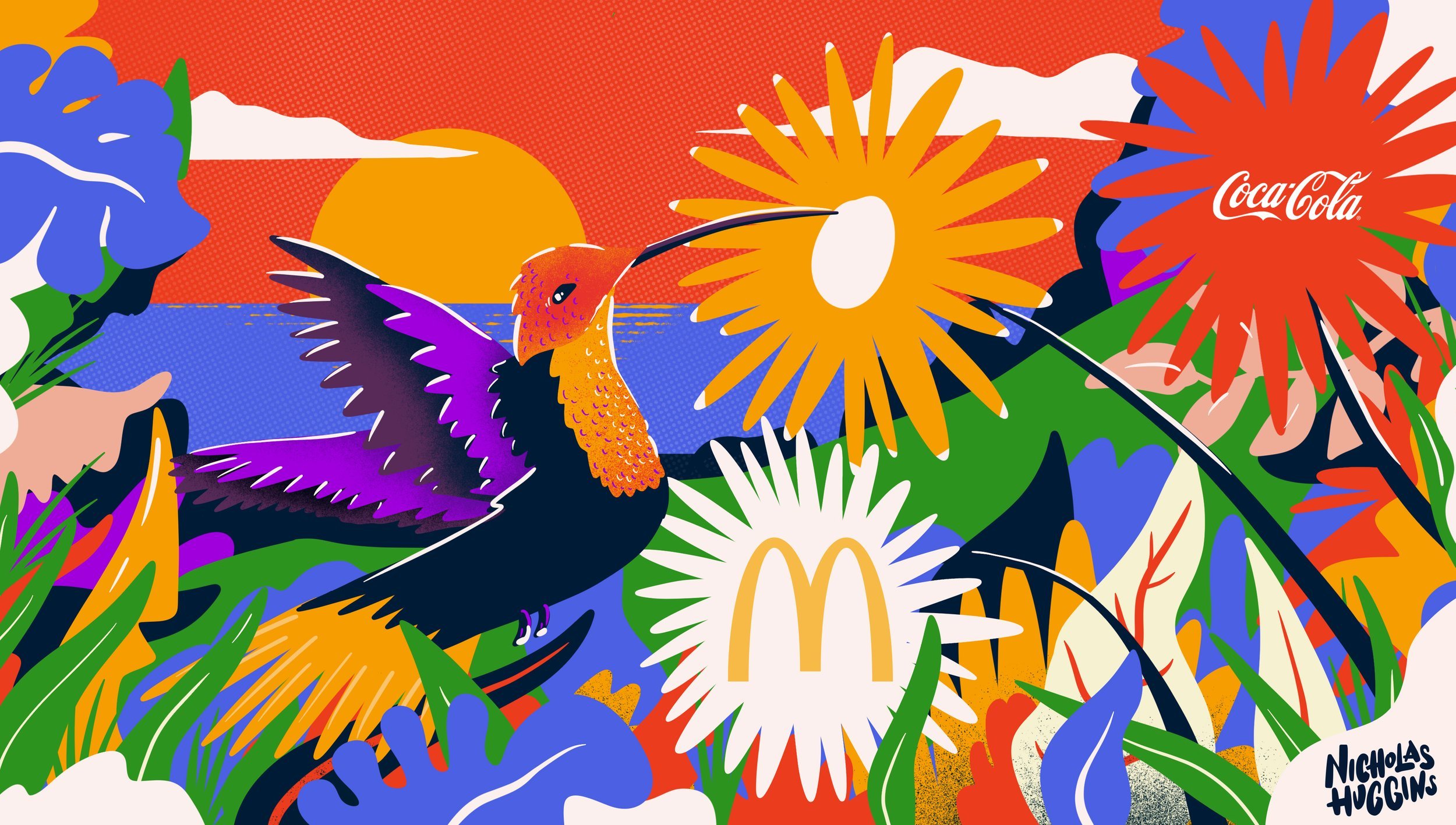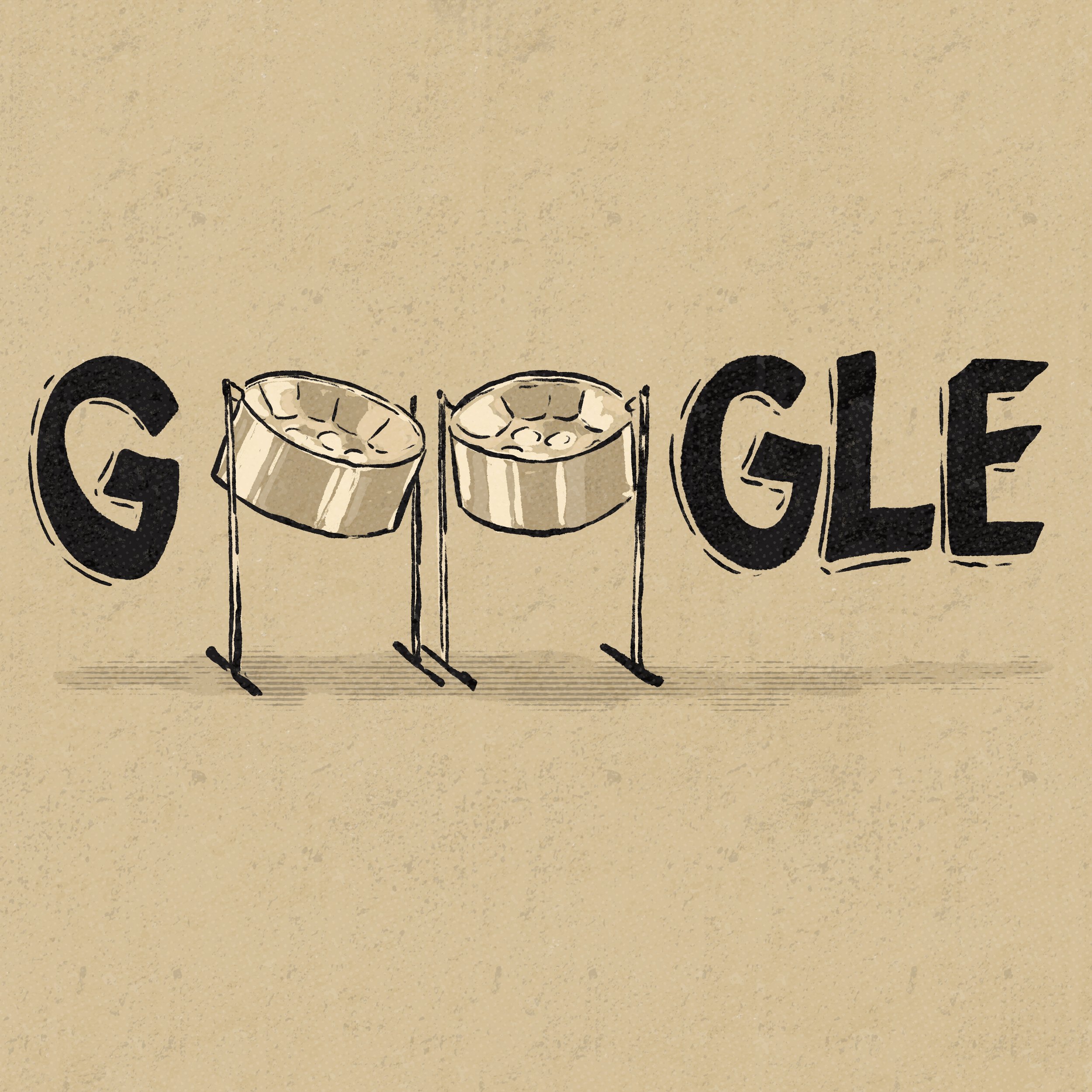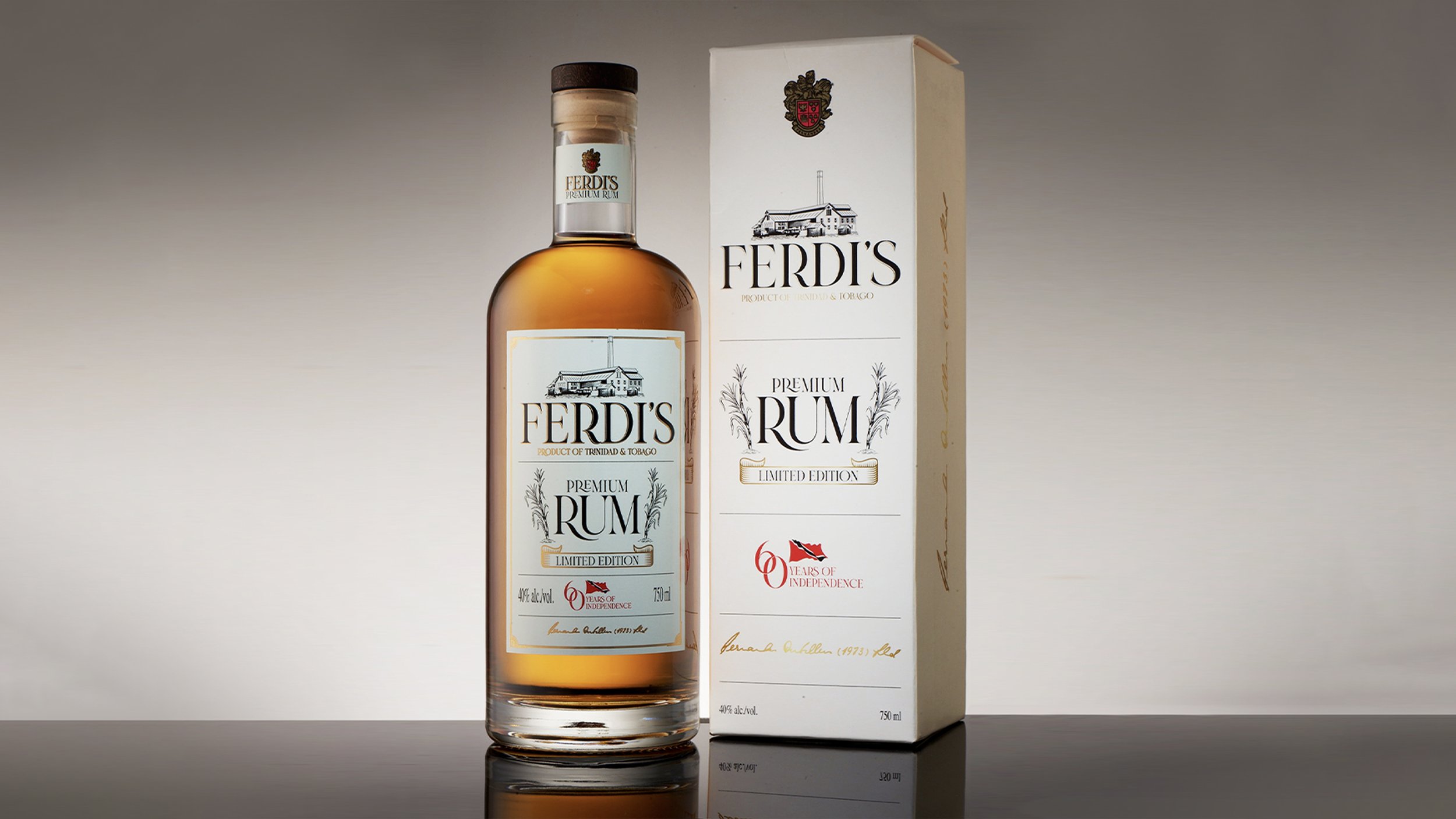Crafting Imagination: A Candid Conversation with Artistic Graphic Designer Nicholas Huggins.
In the education system, art and craft were embedded in our curriculum. One would often ask themselves “Why was I deducted marks for my final piece? Is art not subjective?'‘ The constant battle of trying to meet the criteria and to pursue personal expression within art was a tremendous challenge my peers and I faced at school.
Coming from a background where my parent was very artistic, I felt like I had no choice but to follow in their footsteps. I’ve had multiple failed attempts and at one point, I even wanted to pursue a career in art. Later in life, I found my love for biology and writing and this is where I am at today.
What is art one may ask? Art, defined as the application of human creative skill and imagination, has always played a vital role in society. It has been used to reflect beliefs, values, and the struggles of diverse civilizations. From the Paleolithic era, when art was made using natural pigments such as ochre and charcoal, to contemporary art that uses advanced tools like Photoshop and Procreate, art ignites the imagination of individuals young and old, inspires innovation, and allows us to communicate how we feel about this planet we call home.
Graphic design, a form of commercial art, has been important in society for an incredibly long time. Even though art was used to communicate ideas and concepts way back during ancient civilizations, it wasn’t until the invention of the printing press in the 15th century that graphic design as we know it today began to take shape.
Nicholas Huggins is one of the many individuals in our digital age that has been able to take his talent and create a phenomenal career out of it. From his stunning art pieces that feature design cues from our culture to his eye-catching murals, he’s been on a steady rise to becoming limitless with his creative ideas. Let’s dive head first into this interview and start from the very beginning of Nicholas’ journey.
Could you share with us the story of how you discovered your passion for graphic design and art as a whole? What experiences or influences led you to pursue this creative path, and how did you nurture your skills and knowledge in the field?
Nicholas: I always loved art, I went to Bishop Anstey Junior School for primary school and some of my best memories were taking part in the annual art competition for carnival. Art was an interest of mine and I was always encouraged by my teachers and parents to practice.
I then attended CIC and made sure to always focus during the art classes and do all the work because I wanted to get better. I did art all the way through to Form 6 and it was when I was in Form 5 that I “discovered” graphic design.
At the time I didn’t really know/understand it but I started screen printing t-shirts with a friend and because of that I had to create designs for these t-shirts.
We know that you attended St. Mary’s College and Savannah College of Art & Design. How did your experience and education during those school days shape and mold you into the artist and designer you are today?
Nicholas: Both of these institutions played a huge role in my development as a creative person. I was lucky enough to have a very encouraging art teacher, Andre Reyes, for my entire 7 years at CIC.
He definitely helped nurture my artistic interest as a student artist and helped prepare me to further my education at SCAD. When I got to SCAD, I wanted to study illustrations as I didn’t really know much about all the programs they offered. I ended up randomly taking an Intro to graphic design course and really fell in love with it.
Having a small insight into all the design rules, colour theory, and the possibilities of having a career as a designer, really inspired me to switch to studying graphic design. SCAD had a strong focus on design thinking and really preparing you for a career in the creative industry. There wasn’t a huge focus on learning the programs as it was understood that you needed at least that base-level knowledge.
After graduating from Savannah College of Art & Design, what path did you embark on in your career as a graphic designer? Could you share your professional journey and any notable experiences or projects that have helped shape your expertise and artistic style since leaving the institution?
Nicholas: I graduated in June 2013 and came back home to Trinidad. At the time I was doing a little bit of freelance work and one of my clients at the time recommended me to a company that was looking for an in-house graphic designer. I eventually took that job and worked as the in-house designer for Restaurant Holdings Limited for a year.
RHL is the operator of Burger King and Popeyes in Trinidad and Tobago, so most of my work there was doing all the design work for these two brands. After a year I accepted a role as a senior art director at McCann Port of Spain.
I was at McCann for two and a half years and worked a lot on brands such as Bmobile, Angostura, and Nestle among many others. Working at an advertising agency helped me to develop a strong work ethic and to have a good understanding of corporate design.
While at McCann I was taking on freelance work and eventually left McCann to focus solely on freelance jobs. That was in April 2017. One of those freelance jobs that I credit with being a pivotal job was the branding and packaging for “Gina’s Midnight Hummingbird Chocolate.” It was the first time I combined my love of branding, packaging design, and illustration. It really highlighted the type of design I wanted to be doing.
Can you share the story behind the inception of “Backyard Design Company” and how it came to be? What inspired you to take the leap and establish your own full-service creative agency?
Nicholas: After a couple of years of operating as a freelance designer, I realized that I needed to make some changes. The first thing I knew was that I needed someone to help with the client service side of the business.
At the time I was doing everything from accounts, client service, billing, and of course, design. I also wanted the ability to hire other designers and have other designers work with me on projects without the expectation of the client being that I am doing everything.
With a more formalized agency, I could now work with other designers and play more of a creative designer role in some of the projects. I am still extremely hands-on with a lot of the design work because it is what I love doing, but having an agency and managing a team is something I love doing.
Could you tell us about your clothing brand “Deftment” and its origins? How did you come up with the concept, and what inspired you to venture into the realm of fashion design?
Nicholas: As I said before, my first foray into design was screen printing t-shirts, so when I returned from SCAD I wanted to start having this creative outlet of creating t-shirts. I started Deftment with a friend of mine named Kevin Ross when I was working with Restaurant Holdings Limited, and it evolved into a pretty cool clothing brand.
We really just wanted to make stuff that we would love to wear and that is really the genesis of the vibe of the brand. Since the pandemic, we have put the brand on pause for a bit, but we are in the process of ideating the way forward,
Can you recall your very first commissioned graphic design project? What was the nature of the project, and how did it feel to have your creative skills recognized and valued by a client?
Nicholas: When I returned from university, my first freelance client was to design the logo for a boat charter business. They ended up recommending me to a couple of other people, so a few jobs were borne out of that initial job.
That showed me the power of doing good work and maintaining good client relationships because your past clients a lot of the time, are the ones that help you get more jobs in the future.
From your first commissioned piece to the biggest thus far, how would you describe the evolution and growth in your creative process? What notable differences or changes have you observed in terms of scale, complexity, and client expectations?
Nicholas: I think my creative process has remained pretty much the same. It’s not really rocket science, start with sketching and researching whatever you are working on, then refine the sketches, then take it to the computer and do further refinement digitally. That’s more or less it.
The thing that has changed and evolved and really dictated the growth in my work has been practice and experience. The process is the same, but the experience that I have gathered along the way has added additional filters to that creative process that allow me to work more efficiently and get better results for my clients.
In terms of client expectations, I think that my clients hold me to high standards, especially when they see the work that I do with brands such as Google, Angostura, and Kes the Band, so there is always a lot of expectation. That being said, I also hold myself to a high standard, which is why I try to surround myself with a team that can deliver to that expectation.
In a world saturated with visuals, how do you ensure that your designs stand out and leave a lasting impact on the audience?
Nicholas: This is a very interesting question because you are right, we are saturated with “content” on a daily basis. When I first started I always tried to create work of an “international standard.”
“Wow, this has an international feel to it.”
That was the biggest compliment I felt I could’ve received. I began feeling a bit resentful of that compliment because to me, there were undertones that things made locally or regionally weren’t good enough. I decided I would flip the switch and focus on creating a more Trinbagonian aesthetic in my work. That decision actually worked out to be a complete game changer, because my work became more relatable to the audience it was intended for, and it also set me apart as a designer/illustrator.
That decision is what opened doors for me to be able to create T&T-based designs for major brands such as Johnnie Walker, McDonald’s, and of course, being the artist selected by Google to create a Google Doodle on Steel Pan.




Could you discuss the evolution of the tools you have used for art, from your early days to the present? What were some of the traditional art tools you relied on growing up, and how has your transition to digital art tools transformed your creative process?
Nicholas: When I was at CIC, I primarily did traditional art with traditional art tools such as pencils, paint, paper, bomb spray, inks, etc. It was only when I went to university and got my own computer that I started dabbling with Photoshop and Illustrator.
Now in my daily practice, I primarily use Adobe Illustrator, but the biggest game changer for me in the past 5 years has been the Procreate app on the Ipad. I do 99% of all my illustration work on Procreate, and the quality of the software blows my mind.
With image-generating AI tools, things have changed a bit again, because I use AI tools to get references for some of my illustrations.
In what ways have these advancements in technology enhanced your capabilities as a graphic designer, and do you still find value in incorporating traditional techniques into your work?
Nicholas: I definitely still value using traditional techniques. At the end of the day, nothing can be as freeing or liberating as using a pencil or paper. My process always starts there, because that is where I can do quick thinking while also creating.
When you start on the computer or Ipad, you feel like you need to be creating something good from the start, whereas with traditional methods, you can ideate the process very loosely.
Can you walk us through the process of creating the Google Doodle for Trinidad’s Independence Day? How did you approach the design concept and incorporate elements that symbolize the essence of Trinidad’s culture and history?
Nicholas: Like all my jobs, I started by doing a lot of sketching and research. I read some books on the history of Steel Pan, watched a lot of Youtube, etc. A lot of time was also spent brainstorming with my team as well as with the team at Google.
Google actually had a small internal team of people from Trinidad that was weighing in with their own ideas and opinions, so the development was pretty collaborative. The approval process was very step-by-step, sketches had to get approved, then refined sketches were approved, then final sketches, then options for what the final rendering would look like based on the sketches, then how the animation would work. It was a long process that required approvals every step of the way.
How did it feel to be approached by Google for this opportunity and what significance does it hold for you as a Trinbagonian graphic designer?
Nicholas: It was very surreal. From the outset, I understood that the project would hold a very important cultural significance. I was happy that a company such as Google was choosing to highlight our country, and I also knew that opportunities like this don’t come around every day. It was not a project that I took for granted, and it is something that I am extremely proud to have worked on.
What is the role of cultural influences in your design process and how important is it to you to infuse Trinidadian elements into your work?
Nicholas: I touched on this earlier. But I use the environment around me to help guide creative choices in most projects that I take on. I love that as a creative, I can reflect Trini’s life and experiences back to them through art and design.
What was it like working with Kes the Band for their album cover? How were you able to capture the essence of their music and their vision?
Nicholas: Working with Kes has been a very fun experience. I think that Kes and his managers are normally super clear with the vibe they want to bring to their records, so creating the visuals has been very collaborative in terms of ideation.
Musicians are storytellers, so there are always ideas of what the visual representations of those stories can be and then I translate those ideas into the artwork.
Looking back on your journey as a graphic designer, what have been the most significant lessons or insights you’ve gained that you would like to share with others in the field?
Nicholas: I think patience is key. A lot of the world now is so immediate, and people may expect instant results in their careers. When I look at the Google Doodle job, that opportunity came off the back of creating, practicing, working, and experimenting every single day for many many years.
As our interview draws to a close, is there any final message or advice you would like to share with aspiring graphic designers in Trinidad and beyond?
Nicholas: To anyone entering the field of design in T&T I'd say to stay true to themselves and to maintain a drive and hunger to keep learning and evolving as a creative person.
A lot of my best work for clients has ideas that I came up with while just practicing in my sketchbook or iPad. Try to learn something with each job and always keep growing.
Nicholas’ journey as a graphic designer reminds us of the limitless possibility of artistic expression. Through dedication, hard work, and consistency, Nicholas has smashed the limits of what we as Trinbagonians think is achievable here at home. We hope that his story and journey will serve as a source of inspiration for all creatives to continue chasing their dreams.
Be sure to follow Nicholas on Instagram at nicholashugginscreative and his design agency at backyarddesigncompany to stay up to date on all his designs, collaborations, and upcoming work.





